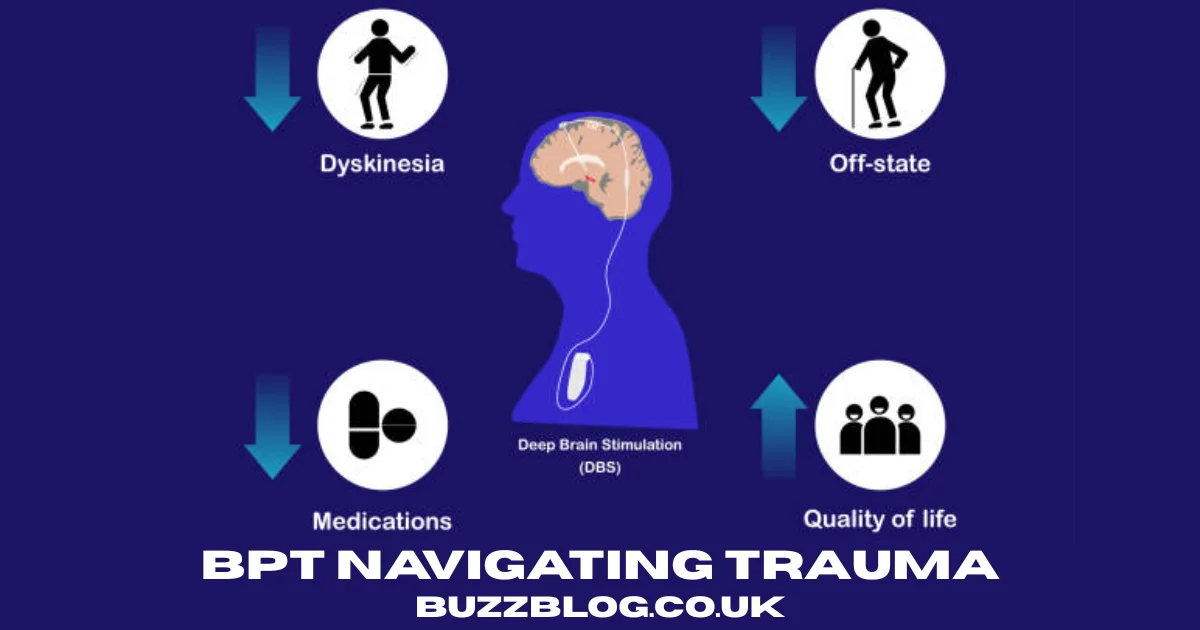Introduction
Trauma doesn’t just live in the mind—it embeds itself in our muscles, tissues, and nervous system. The Body Psychotherapy Technique (bpt navigating trauma) offers a powerful way to release emotional pain stored within the body and brain. This approach bridges psychology and physiology, helping individuals find true relief from years of emotional burden.
What Is BPT (Body Psychotherapy Technique)?
BPT is a holistic therapeutic method that integrates the connection between the mind and body. Unlike talk therapy, which focuses mainly on cognitive processing, BPT dives deep into the body’s emotional storage centers.
The philosophy behind BPT is simple yet profound: the body remembers what the mind forgets. By working with body sensations, movement, and breath, clients can access repressed emotions and allow them to surface naturally.
The Science Behind Trauma Storage
Trauma creates biochemical imprints in the nervous system. When we face overwhelming experiences, our brain shifts into survival mode—activating the fight, flight, or freeze response. If the trauma remains unresolved, the body keeps reacting as if the threat is still present.
Over time, this leads to tight muscles, shallow breathing, and chronic tension. Essentially, the body becomes the “storyteller” of what the mind tries to suppress.
The Physical Manifestations of Emotional Pain
Have you ever felt a heavy chest during anxiety or stomach knots when stressed? These are not coincidences. They’re signs of stored emotional energy.
People with unresolved trauma often experience:
- Chronic fatigue
- Headaches or migraines
- Digestive issues
- Muscle tension or back pain
The body expresses what the voice cannot. Through BPT, these physical manifestations become pathways toward emotional liberation.
The Role of the Brain in Trauma Retention
Three major brain areas play roles in trauma:
- Amygdala: Registers fear and danger
- Hippocampus: Stores memory and context
- Prefrontal Cortex: Processes emotions logically
When trauma occurs, the amygdala stays overactive, while the hippocampus under-functions. This imbalance keeps individuals trapped in a cycle of fear and hypervigilance.
BPT helps restore this balance through deep somatic awareness and relaxation, allowing the brain to recalibrate.
Understanding Body Memory
Body memory refers to how the body “remembers” sensations, movements, and emotions even when the conscious mind does not. It’s why certain smells, sounds, or gestures can trigger strong emotional reactions.
BPT helps clients safely revisit these body memories—recognizing them without reliving them—so the energy can be released rather than repressed.
The Power of Awareness in BPT
Healing begins with awareness. By tuning into sensations, one begins to notice patterns—tightness, breath holding, or numbness—that reveal where emotions are stuck.
Awareness turns unconscious pain into conscious healing energy. In BPT, the therapist guides the client gently toward these realizations without pressure.
Techniques Used in BPT
Some of the most effective techniques include:
- Breathwork: Deep, rhythmic breathing that calms the nervous system.
- Grounding exercises: Reconnecting to physical sensations and safety.
- Somatic movement: Gentle body movements that release tension.
- Mindfulness practices: Staying present with emotions without judgment.
Each technique aims to restore flow—emotionally, mentally, and physically.
The Emotional Detox Process
During emotional release, clients may cry, tremble, or even laugh uncontrollably. This is the body detoxing emotionally—letting go of stored tension.
It’s not a breakdown but a breakthrough. The process allows emotions to move freely, clearing energetic blockages and restoring balance.
The Integration Phase
After emotional release comes integration. This phase focuses on grounding, reflection, and balance. Clients begin to notice deeper calm, improved sleep, and a renewed sense of self.
Integration ensures that emotional healing becomes part of one’s daily life rather than a temporary relief.
The Role of the Therapist in BPT
A BPT therapist acts as a compassionate guide—not a controller. They help create a safe space where vulnerability becomes strength. Their presence allows clients to explore pain without fear, knowing they are seen and supported.
Real-Life Benefits of BPT
People who undergo BPT often experience:
- Relief from anxiety and depression
- Reduced physical pain
- Better emotional regulation
- Increased self-awareness
- Stronger mind-body connection
These changes often ripple outward, improving relationships and overall quality of life.
BPT and Complementary Therapies
BPT blends well with practices like yoga, meditation, and EMDR. Nutrition, hydration, and consistent sleep further support emotional recovery. A holistic lifestyle ensures that body and mind continue to heal in harmony.
Common Misconceptions About BPT
One common myth is that bpt navigating trauma is merely physical or dramatic. In reality, most sessions are gentle, guided, and emotionally grounded. Emotional release in BPT is always safe, consensual, and mindful.
Steps to Begin Your Healing Journey
- Find a certified BPT practitioner with trauma-informed training.
- Prepare emotionally by setting clear intentions.
- Stay consistent—healing requires patience and practice.
Your body is not your enemy; it’s your greatest ally in healing.
Conclusion
bpt navigating trauma reminds us that trauma isn’t a life sentence—it’s a message from the body asking to be heard. By navigating trauma through the wisdom of both brain and body, one can finally find peace, freedom, and reconnection with self.

